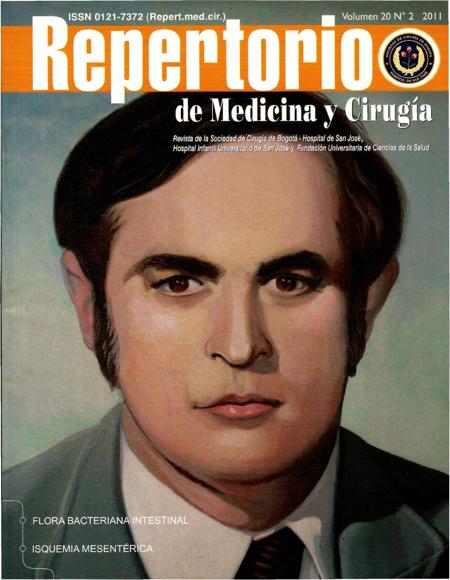Esteroides e infección en trauma craneoencefálico
Infectious complications in steroid recipients for CNS trauma
Esta obra está bajo una licencia internacional Creative Commons Atribución-NoComercial-CompartirIgual 4.0.
Mostrar biografía de los autores
Estudio descriptivo retrospectivo que busca valorar la frecuencia de infección en trauma craneoencefálico que fue manejado con esteroides. Se recolectó una muestra de 153 pacientes y de las historias clínicas se extrajeron las variables demográficas (edad, género, mortalidad) y las características clínicas (infección, uso de esteroides). Los resultados no evidenciaron aumento de la frecuencia de infecciones en los pacientes con trauma craneoencefálico que recibieron manejo con esteroides.
Visitas del artículo 397 | Visitas PDF 998
Descargas
1 Braughler JM, Hall ED. Current application of "high-dose" steroid therapy for CNS injury. A pharrnacological perspective. J Neurosurg. 1985 Jun; 62(6):806-10.
2 Cooper PR, Moody S, Clark WK, Kirkpatrick J, Maravilla K, Gould AL, et al. Dexarnethasone and severe head injury. A prospective double-blind study. J Neurosurg. 1979 Sep;51(3):307-16.
3 Saul TG, Ducker TB, Salcman M, Carro E. Steroids in severe head injury: a prospective randomized clinical trial. J Neurosurg. 1981 May; 54(5):596-600.
4 Braakman R, Schouten HJ, Blaauw-van DM, Minderhoud JM. Megadose steroids in severe head injury. Resultsof a prospective double-blind clinical trial. J Neurosurg. 1983 Mar; 58(3):326-30.
5 Alderson P, Roberts l. Corticosteroids foracule traumaticbrain injury. Cochrane Database Syst Rev. 2005 Jan 25;(1):CD000196.
6 Bazarian JJ. Evidence-based emergency medicine. Corticosteroids for traumatic brain injury. Ann Emerg Med. 2002 Nov;40(5):515-7.
7 Champion HR, Sacco WJ, Copes WS, Gann DS, Gennarelli TA, Flanagan ME. A revision of the Trauma Score. J Trauma. 1989 May; 29(5):623-9.
8 Hall ED. High-doseglucocorticoid treatmentimproves neurological recovery in head-injured mice. J Neurosurg. 1985 Jun; 62(6):882-7.
9 Hall ED. The neuroprotective pharrnacology of methylprednisolone. J Neurosurg. 1992 Jan;76(1):13-22.
10 McClelland S, III, Long DM. Genesis of the use of corticosteroids in the treatment and prevention of brain edema. Neurosurgery. 2008 Apr;62(4):965-7.
11 Park CO. The effects of methylprednisolone on prevention of brain edema after experimental moderate diffuse brain injury in rats: comparison between dosage, injection time, and treatment methods. Yonsei Med J. 1998 Oct;39(5):395-403.
12 Tornheim PA, McLaurin RL. Effect of dexamethasone on cerebraledema from cranial impact in the cat. J Neurosurg. 1978 Feb; 48(2): 220-7.
13 Mejía JH, Senz EK. Manejo del paciente con trauma craneoencefálico. En: Ordoñez CA, Ferrara R, Buitrago R. Cuidado intensivo y Trauma. Bogotá: Distribuna Médica; 2009. p. 451-73.
14 Trauma Craneoencefálico. En: PedrozaCampoA. Compendio de Neurocirugía Cali, Colombia : Hospital Universitario del Valle; 2003. p. 249-69.
15 Stiver SI, Manley GT. Prehospital management of traumatic brain injury. Neurosurg Focus. 2008 Oct;25(4):E5.













